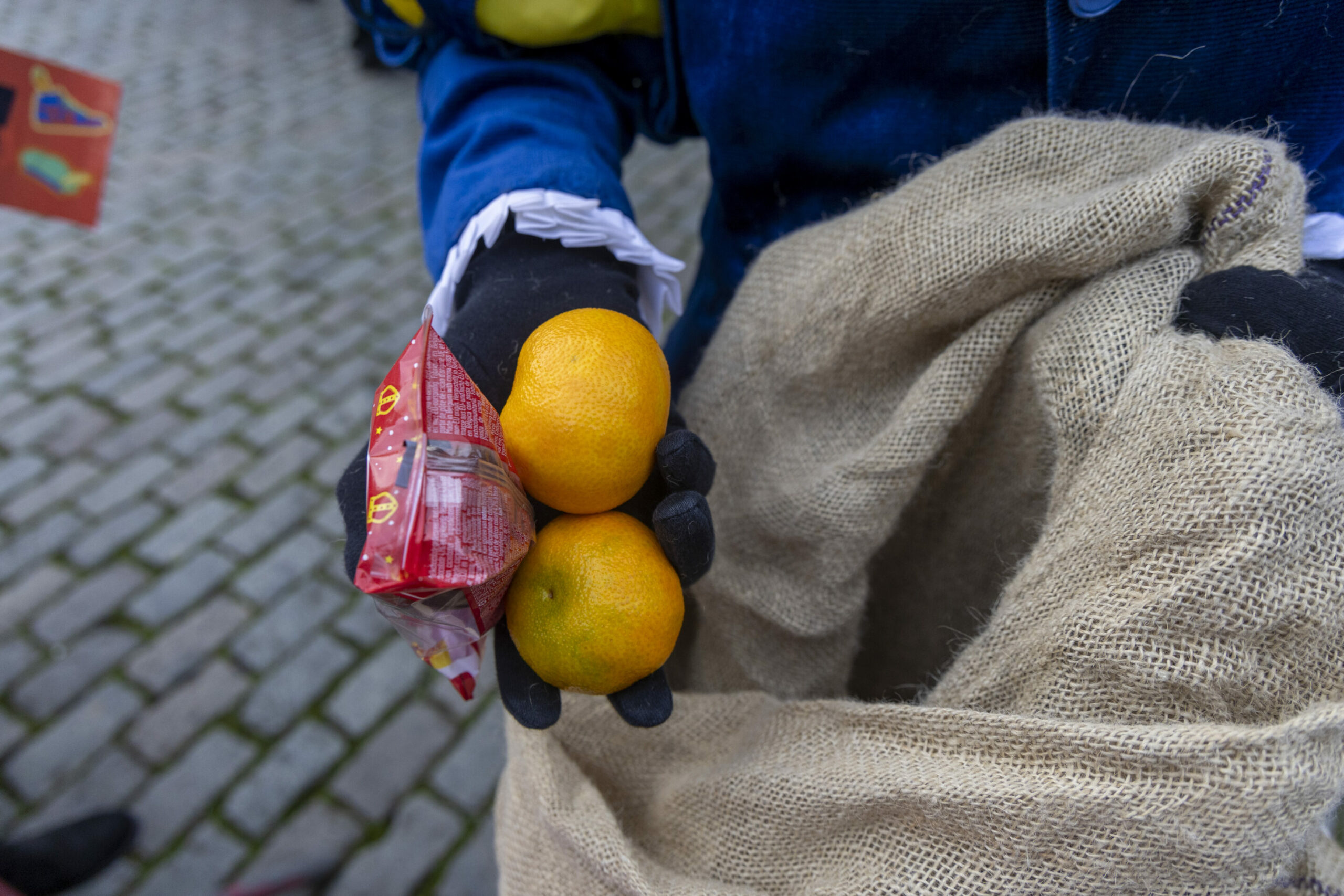Children across Belgium will be too excited to sleep tonight (5 December), in anticipation of a visit from a jovial old man. On Friday morning, they will wake up to presents and sweet treats – but only if they have well-behaved this year.
In Belgium, children don't have to wait until Christmas to unwrap presents, as the country's traditional Santa Claus figure (Sinterklaas or 'de Sint' in Dutch, Saint Nicolas in French) arrives as early as 6 December.
Before going to bed on 5 December, children across the country typically lay out a glass of milk or beer for Sinterklaas, a carrot and sugar cube for his horse, and a sweet treat for his helper 'Zwarte Piet' ('Black Pete').

Well-behaved children are given mandarins, chocolate and other sweet treats. Credit: Belga / Nicolas Maeterlinck
At night, Sinterklaas and his helper travel across people's rooftops and climb down chimneys to leave presents in living rooms. The next morning, well-behaved children will wake up to presents, including speculoos, chocolate Sint figures and coins, marzipan and mandarins.
Who is Sinterklaas?
The Christmassy character has his origins in Nicholas of Myra, a Greek bishop from Myra who lived in the fourth century AD. The Sint is depicted as a stately old man with a long white beard. His clothing is broadly based on a bishop's attire: he wears a tall, red hat (mijter in Dutch and mitre in French), adorned with a golden cross on the front.
Other distinctive features are his red cloak, adorned with gold stitching, and his golden staff. He is often seen carrying a large book in which he keeps his records on whether children have been naughty or nice.

The Sint can be recognised by his red cloak, adorned with gold stitching. Credit: Belga / Nicolas Maeterlinck
Sinterklaas arrives in Antwerp by steamboat every year around mid-November.
His right-hand man Zwarte Piet has been at the centre of many heated debates in Belgium and attracts a great deal of international criticism. Traditionally, his face is black from chimney soot. In the past, impersonators have therefore donned blackface, black curly wigs, red lips and large golden earrings to complete the caricature of a black person.
But times are changing, and given Belgium's violent colonial history in the Democratic Republic of the Congo, Rwanda and Burundi, many believe the country should reshape outdated colonial narratives on race. Nowadays, people dressing up as Zwarte Piet either wear no make-up or paint a few black spots on their face.
Where to see Sinterklaas on Friday
Depending on when 6 December falls in the week, Sinterklaas visits children in the daytime to hand out more sweet treats. However, because it falls on a Friday this year, many events have already taken place. He made his annual appearance on the iconic Grand Place last weekend – marking his official entrance to the Belgian capital.
He will likely be spotted in many large supermarkets, shopping malls and other retail locations across the country in the coming days. Most schools in all regions will invite Sinterklaas to meet pupils, while many public libraries are also organising events around his special day, including a visit from the man himself.
Manneken Pis in Brussels will also be dressed for the occasion from 09:00 until 18:00 on 6 December. On Saturday 7 December, Théâtre Ocean Nord is hosting a festive family event which includes a visit from Sinterklaas followed by the show 'Rabibochées'. The play is an ode to love and friendship.
Queen Nikkolah – a black, female version of Sinterklaas created by artist Laura Nsengiyumva who challenges racial and gender boundaries – will be visiting children in the Zinnema Cultural Centre in Anderlecht on Saturday.

